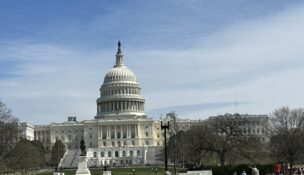Ruling may put employers in lose-lose situation
By: dmc-admin//July 6, 2009//
When the U.S. Supreme Court decided Ricci v. DeStefano, it did more than rule in favor of New Haven firefighters who sued after the city tossed out the results of a civil service exam after too few minority employees passed.
The justices also created a tough dilemma for employers: if the tests they use to hire or promote employees have the effect of excluding minorities, companies can’t discard the results, nor can they avoid disparate impact liability based on the results.
“The outcome really puts employers in a box,” said Andrew J. Pincus, a partner in the Washington office of Mayer Brown who filed an amicus brief on behalf of the National League of Cities and other groups. “Before, employers had some leeway. Under the new standard, they are really in a box because they will be facing costly litigation no matter what they do.”
The case arose from New Haven’s decision not to certify the results of a civil service exam after the group of 19 firefighters whose results qualified for a promotion included only two Hispanic and no black firefighters.
The employees who passed the test sued, claiming the decision not to count the results was based on race, and therefore violated Title VII’s prohibition on disparate treatment.
The city argued that certifying the results would open it up to disparate impact liability under Title VII.
But the Supreme Court, in a 5-4 decision, sided with the employees, saying that an employer may not discard test results on the basis of race unless it shows a “strong basis in evidence” that it would be subject to disparate impact liability.
Simply showing the existence of a prima facie case for disparate impact liability isn’t enough.
“That is because the city could be liable for disparate-impact discrimination only if the examinations were not job related and consistent with business necessity, or if there existed an equally valid, less-discriminatory alternative that served the city’s needs but that the city refused to adopt,” Justice Anthony Kennedy wrote in the opinion. “We conclude there is no strong basis in evidence to establish that the test was deficient in either of these respects.”
Catch-22
Although the case involved municipal workers, employers and employees in the private sector are also covered by Title VII, so the ruling affects them too.
“Title VII applies with equal force to the private sector and the public sector,” said Rae T. Vann, a partner at the Washington labor and employment firm Norris, Tysse, Lampley & Lakis, and general counsel for the Equal Employment Advisory Council, which also submitted an amicus brief in the case.
“Private sector employees should not sit back and assume that because a municipality was involved [in this case] that it does not impact private sector employment and selection and promotion processes,” she cautioned.
That’s not to say that the decision gave employers a clear rule to follow to avoid liability.
“I don’t know that the ruling provided us with any clarity,” Vann said. “I think [the justices] made the situation a little more challenging as far as navigating that Catch-22 because they changed the rules of the game without giving employers the guidance that they need.”
Without knowing just what qualifies as a “strong basis in evidence” of the likelihood of being found liable for creating a disparate impact, many employers will choose not to discard a selection or promotion process that yields few minority candidates once it is in place, possibly drawing a disparate impact suit.
Those who believe they do have such a strong showing could be hit with disparate treatment claims.
“The risk of litigation is much greater either way,” Pincus said.
The problem is the wording of the statute itself, which was drafted in the civil rights era and aimed at stopping discrimination against blacks and members of other minority groups. But the wording prohibits race-based employment action that adversely affects any racial group.
“The bottom line is, ironically, the easier you make it for non-minorities to sue for disparate treatment, the harder it is to adopt race conscious policies that might shield [employers] from liability for disparate impact,” said George Mason University School of Law professor Ilya Somin.
That is an undesirable result for most companies, because employers generally want to promote diversity in their workforces. But actions designed to protect workplace diversity are much more likely to be struck down by courts after the ruling.
Now, the most important thing for employers to do is ensure that tests and other procedures that are used to hire and promote employees are tested for fairness before they are administered. After the fact, it’ll be too late.
“If you think of implementing a test, you need to make sure you employ rigorous means to ensure the test is properly validated,” Vann said. “Make sure you are looking at fairness issues from the front end.”
Pincus agreed.
“What the court seems to be saying is that there is a lot of leeway before a test is administered, or before a standard is set for hiring,” he said.
Death Knell for Disparate Impact?
Some experts think the ruling put disparate impact claims on such shaky footing that it could be a nail in the cause of action’s coffin.
“In this case, [the] majority’s opinion equates race consciousness with racial discrimination,” said Santa Clara University School of Law professor Bradley W. Joondeph. “The idea is that if you are taking an action conscious of its racial implications, that amounts to racial discrimination.
“If that is true, then [disparate impact claims] violate the Equal Protection Clause of the Constitution,” Joondeph charged.
And if the Supreme Court has a chance to consider such a challenge, it could do away with the cause of action altogether, he said.
Others disagree.
“As I read the decision, it doesn’t seem to constrain disparate impact lawsuits,” said Somin. “Disparate impact liability is very strongly embedded in the Court’s jurisprudence. I think they would be reluctant to radically revise their own statutory interpretations that way.”
Legal News
- Former Wisconsin police officer charged with 5 bestiality felony counts
- Judge reject’s Trump’s bid for a new trial in $83.3 million E. Jean Carroll defamation case
- The Latest: Supreme Court arguments conclude in Trump immunity case
- Net neutrality restored as FCC votes to regulate internet providers
- Wisconsin Attorney General asks Congress to expand reproductive health services
- Attorney General Kaul releases update at three-year anniversary of clergy and faith leader abuse initiative
- State Bar leaders remain deeply divided over special purpose trust
- Former Wisconsin college chancellor fired over porn career is fighting to keep his faculty post
- Pecker says he pledged to be Trump campaign’s ‘eyes and ears’ during 2016 race
- A conservative quest to limit diversity programs gains momentum in states
- Wisconsin prison inmate pleads not guilty to killing cellmate
- Waukesha man sentenced to 30 years for Sex Trafficking
WLJ People
- Power 30 Personal Injury Attorneys – Russell Nicolet
- Power 30 Personal Injury Attorneys – Benjamin Nicolet
- Power 30 Personal Injury Attorneys – Dustin T. Woehl
- Power 30 Personal Injury Attorneys – Katherine Metzger
- Power 30 Personal Injury Attorneys – Joseph Ryan
- Power 30 Personal Injury Attorneys – James M. Ryan
- Power 30 Personal Injury Attorneys – Dana Wachs
- Power 30 Personal Injury Attorneys – Mark L. Thomsen
- Power 30 Personal Injury Attorneys – Matthew Lein
- Power 30 Personal Injury Attorneys – Jeffrey A. Pitman
- Power 30 Personal Injury Attorneys – William Pemberton
- Power 30 Personal Injury Attorneys – Howard S. Sicula











